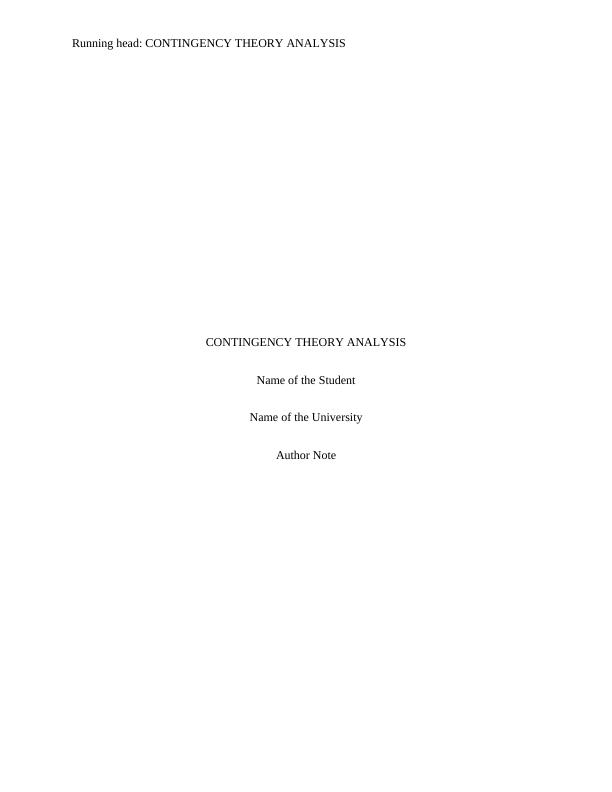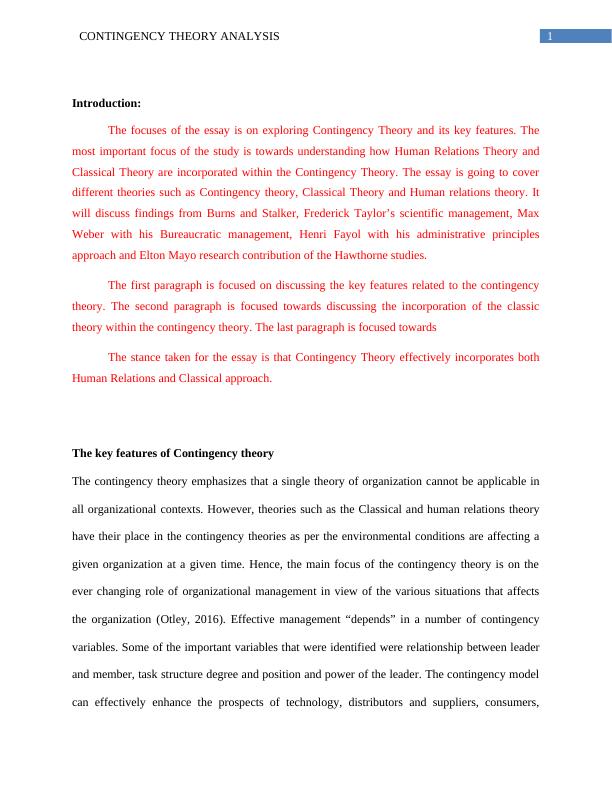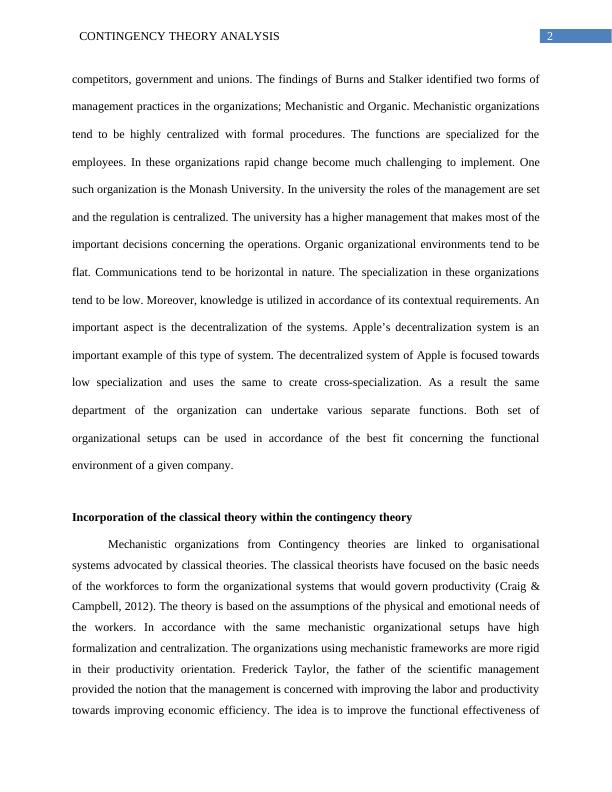Contingency Theory Analysis
Discuss the key features and elements of Contingency Theory and demonstrate how the theory incorporates the Classical and Human Relations approaches
7 Pages1728 Words83 Views
Added on 2023-03-20
About This Document
This essay explores Contingency Theory and its key features, including the incorporation of Classical Theory and Human Relations Theory. It discusses the findings from various theories and their application in different organizational contexts. The essay concludes by highlighting the challenges faced by managers in today's dynamic work environment.
Contingency Theory Analysis
Discuss the key features and elements of Contingency Theory and demonstrate how the theory incorporates the Classical and Human Relations approaches
Added on 2023-03-20
ShareRelated Documents
End of preview
Want to access all the pages? Upload your documents or become a member.
Organizational Behavior Assignment Essay
|8
|2138
|380
Essay on Understanding Organizational Behaviour
|9
|2152
|236
Business Management of McDonald: Case Study
|4
|628
|71
Organizational Communication: Classic Approach
|4
|780
|428
Insight Into the Organization Theory - Essay
|12
|2795
|16
Organizational Design Fundamentals and Emotional Intelligence in Contemporary Organizations
|6
|1528
|233



